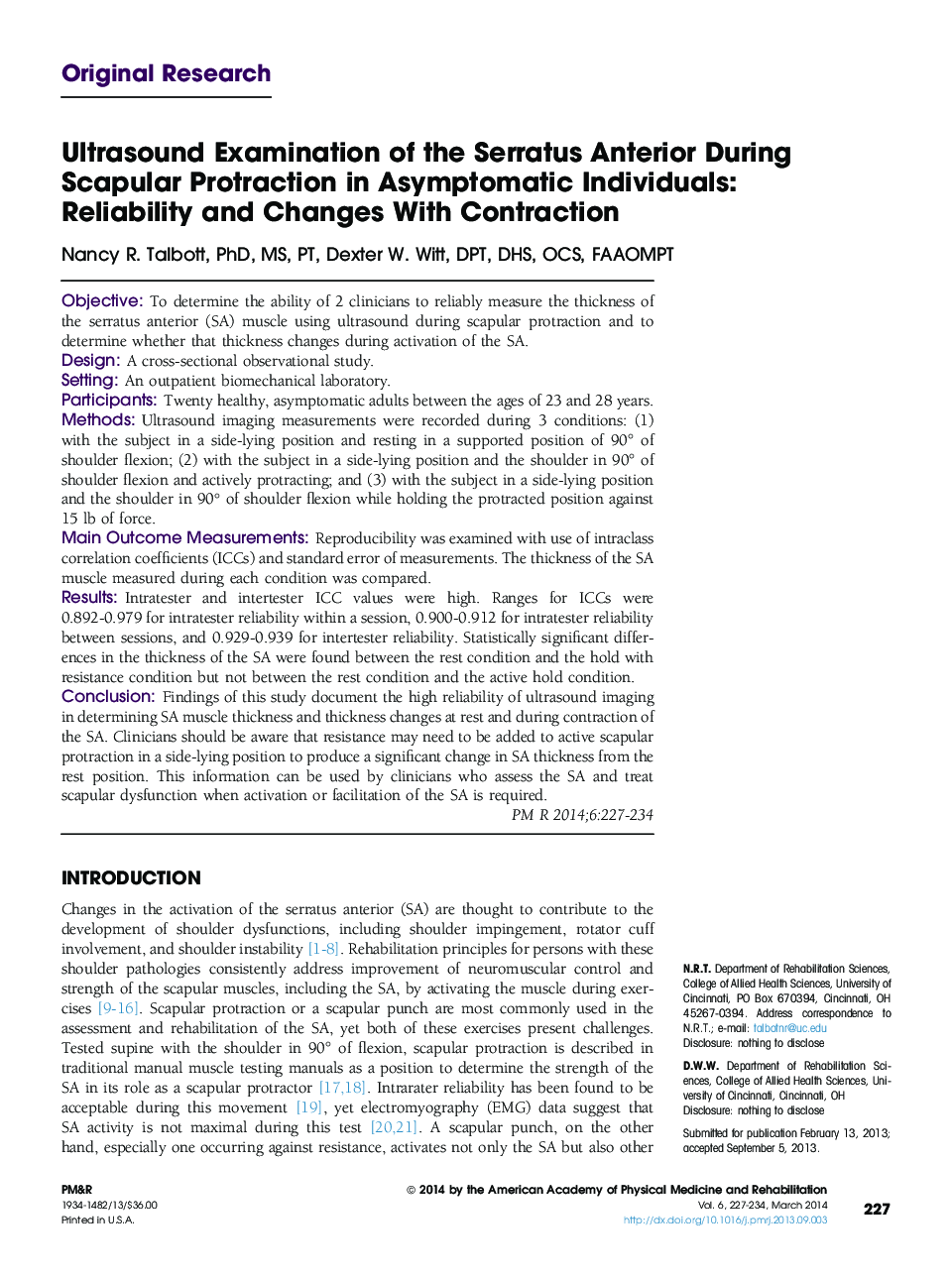| Article ID | Journal | Published Year | Pages | File Type |
|---|---|---|---|---|
| 2707204 | PM&R | 2014 | 8 Pages |
ObjectiveTo determine the ability of 2 clinicians to reliably measure the thickness of the serratus anterior (SA) muscle using ultrasound during scapular protraction and to determine whether that thickness changes during activation of the SA.DesignA cross-sectional observational study.SettingAn outpatient biomechanical laboratory.ParticipantsTwenty healthy, asymptomatic adults between the ages of 23 and 28 years.MethodsUltrasound imaging measurements were recorded during 3 conditions: (1) with the subject in a side-lying position and resting in a supported position of 90° of shoulder flexion; (2) with the subject in a side-lying position and the shoulder in 90° of shoulder flexion and actively protracting; and (3) with the subject in a side-lying position and the shoulder in 90° of shoulder flexion while holding the protracted position against 15 lb of force.Main Outcome MeasurementsReproducibility was examined with use of intraclass correlation coefficients (ICCs) and standard error of measurements. The thickness of the SA muscle measured during each condition was compared.ResultsIntratester and intertester ICC values were high. Ranges for ICCs were 0.892-0.979 for intratester reliability within a session, 0.900-0.912 for intratester reliability between sessions, and 0.929-0.939 for intertester reliability. Statistically significant differences in the thickness of the SA were found between the rest condition and the hold with resistance condition but not between the rest condition and the active hold condition.ConclusionFindings of this study document the high reliability of ultrasound imaging in determining SA muscle thickness and thickness changes at rest and during contraction of the SA. Clinicians should be aware that resistance may need to be added to active scapular protraction in a side-lying position to produce a significant change in SA thickness from the rest position. This information can be used by clinicians who assess the SA and treat scapular dysfunction when activation or facilitation of the SA is required.
